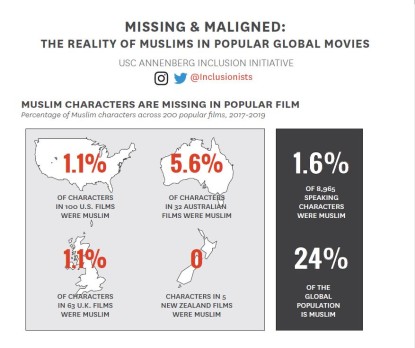Resources
Contact
Diversity & Inclusion
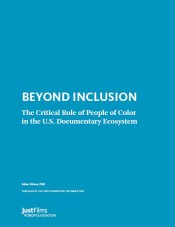
Beyond Inclusion is researched and written by Sahar Driver, PhD. It outlines the relationship between documentary and social change, provides a critical overview of nonfiction film organisations led by and serving communities of color in the US, their impact in shaping a more equitable documentary sector, and how they advance non-fiction social justice filmmaking. It makes recommendations to funders and stakeholders on why and how these efforts should be resourced at this time.
Drawing from a dataset of nearly 200 organisations, Beyond Inclusion details the key functions and activities of these organizations today, which range from supporting the artists (providing equipment and training, resources, and networking opportunities), to distributing the works of filmmakers of color to audiences of color, to funding.
The report’s recommendations to funders include investing in POC-led organizations with clear plans and commitments to nurture POC authorship, audiences, and careers as well as film production models and practices with a higher standard of ethics and accountability in the creation, funding and distribution of documentaries.
The report concludes that a generational investment in POC infrastructure is necessary to both shore up legacy organizations that have worked with minimal resources for decades as well as dynamic new organizations and networks that have emerged in the last ten years. These players constitute a powerful ecosystem that—if properly resourced—can be a significant force in transforming the documentary landscape toward one that is more inclusive, ethically grounded and sustainable, and that ultimately is a more powerful force for social change.
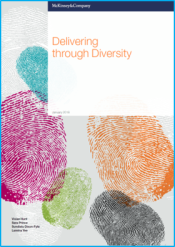
Awareness of the business case for inclusion and diversity is on the rise. While the moral imperative typically is the impetus behind these efforts, companies have increasingly begun to regard inclusion and diversity as a source of competitive advantage, and specifically as a key enabler of growth.
McKinsey's latest study of diversity in the workplace, Delivering through Diversity, reaffirms the global relevance of the link between diversity—defined as a greater proportion of women and a more mixed ethnic and cultural composition in the leadership of large companies—and company financial outperformance. The new analysis draws on data of more than 1,000 companies covering 12 countries, measuring not only profitability but also longer-term value creation, exploring diversity at different levels of the organization, and providing insight into best practices.
Yet progress on diversification initiatives has been slow and companies are still uncertain about how they can most effectively use diversity and inclusion to support their growth and value-creation goals. To address these uncertainties, the report also provides a perspective on how to take action on inclusion and diversity to impact growth and business performance as well as tangible case studies.
The imagineNATIVE Institute is a department within imagineNATIVE that houses year-round professional development programs, events, and talks for Indigenous screen and digital content creators. The Institute presents Industry Days at the annual imagineNATIVE Film + Media Arts Festival, with panels, masterclasses and networking/social events.
Much of the Institute's year-round programming takes place in The Commons @ 401, a multi-purpose arts space including a gallery/screening room, located on the 4th floor of the historic 401 Richmond Building in downtown Toronto. The Institute strives to provide Indigenous-led professional development opportunities that will address gaps within the industry, some of which will be open to international Indigenous applicants.
On-Screen Protocols and Pathways
A Media Production Guide to Working with First Nations, Métis and Inuit Communities, Cultures, Concepts and Stories.
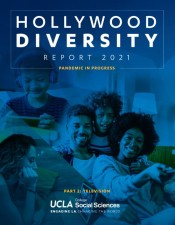
This is the eighth in a series of annual reports to examine relationships between diversity and the bottom line in the Hollywood entertainment industry. Part 1, which focuses on 2020 Hollywood theatrical films, was released in February 2021. This report, Part 2, considers the latest television season since the previous Hollywood Diversity Report release — the 2019-20 season. It examines 461 scripted broadcast, cable, and digital platform television shows from the 2019-20 season in order to document the degree to which women and people of color are present in front of and behind the camera. It discusses any patterns between these findings and conventional and social media audience ratings.
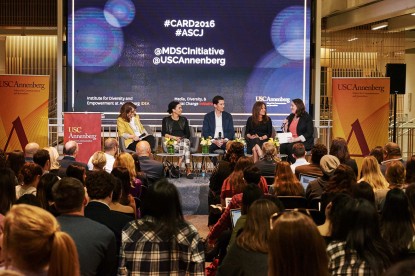
The Annenberg Inclusion Initiative is the leading think tank in the world studying diversity and inclusion in entertainment through original research and sponsored projects. Beyond research, the Annenberg Inclusion Initiative develops targeted, research-based solutions to tackle inequality.
The report, titled “Missing & Maligned: The Reality of Muslims in Popular Global Movies,” was released by Stacy L. Smith and the Annenberg Inclusion Initiative with support from Academy Award-nominated actor Riz Ahmed, the Ford Foundation and Pillars Fund. The study includes a quantitative and qualitative exploration of Muslim representation in 200 popular films from the United States, the United Kingdom, Australia and New Zealand released between 2017 and 2019. The results point to the scope of the problem and have prompted action from this coalition of voices to tackle some of the underlying reasons for the lack of Muslims in popular movies.
Muslims are the fastest growing and most racially and ethnically diverse religious community in the world. Yet according to a new study released today, Muslim characters are missing on screen — and when they do appear in popular movies, they are depicted with dangerous stereotypes that can create psychological and physical harm.
